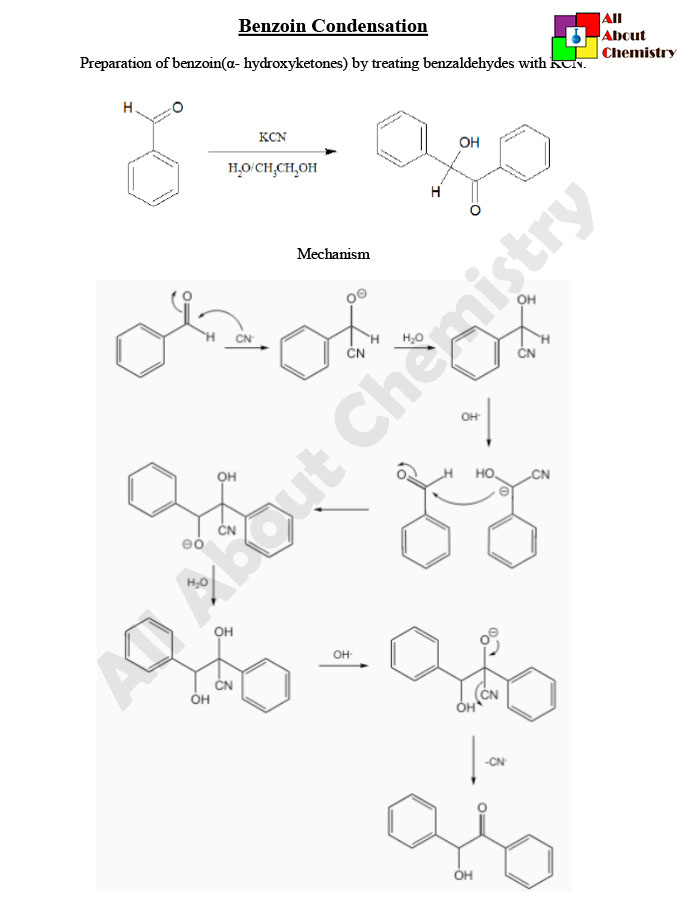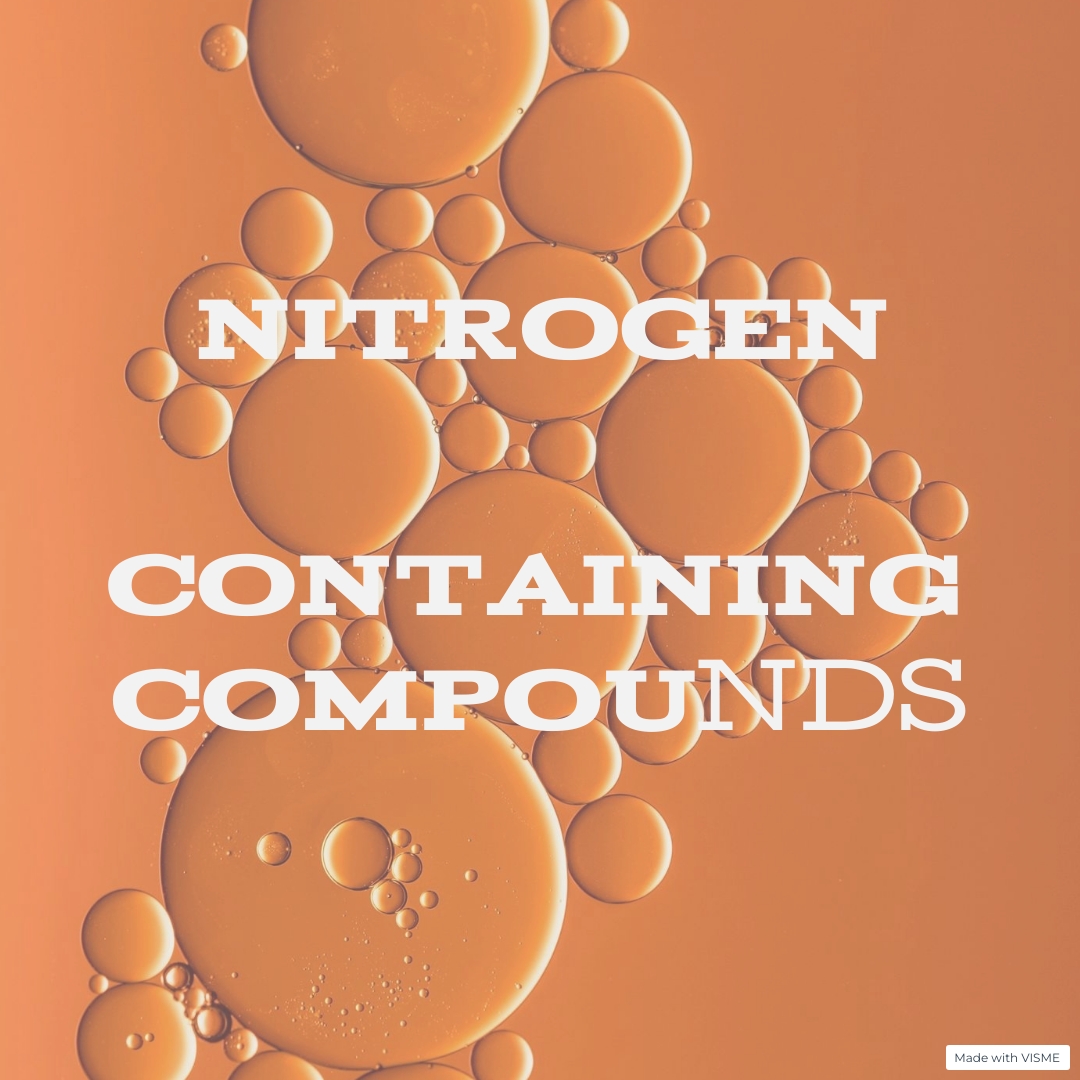The Benzoin condensation is a carbon-carbon bond-forming reaction that involves the coupling of two aldehydes to form a α-hydroxy ketone, also known as a benzoin. This reaction was first reported by the German chemist Justus von Liebig in 1832. The general reaction scheme for the Benzoin condensation is as follows:
2Aldehydes→Baseα-Hydroxy Ketone (Benzoin)
The mechanism of the Benzoin condensation involves several steps:
- Aldol Condensation: The first step is the formation of an enolate ion from one of the aldehydes in the presence of a base. This enolate ion then undergoes a nucleophilic attack on the carbonyl carbon of the second aldehyde, resulting in the formation of a β-hydroxy aldehyde intermediate through an aldol condensation reaction.
Aldehyde+Base→Enolate Ion
Enolate Ion+Aldehyde→β-Hydroxy Aldehyde (Aldol Adduct)
- Tautomerization: The β-hydroxy aldehyde intermediate undergoes tautomerization to form an enol. This step involves proton transfer from the hydroxyl group to the adjacent carbon, resulting in the formation of a C=C double bond.
β-Hydroxy Aldehyde→Enol
- Ketone Formation: The enol tautomerizes further to form the α-hydroxy ketone product, also known as the benzoin. This step involves proton transfer from the hydroxyl group to the adjacent carbon, leading to the formation of a C=O double bond.
Enol→α-Hydroxy Ketone (Benzoin)
Overall, the Benzoin condensation is a useful method for the synthesis of α-hydroxy ketones, which serve as versatile intermediates in organic synthesis. The reaction can be catalyzed by various bases, including cyanide ion (CN–), thiazolium salts, and tertiary amines. Additionally, the benzoin condensation can be extended to form a variety of α-hydroxy ketones by using different aldehydes as starting materials.

The Benzoin condensation has several applications in organic synthesis due to its ability to form α-hydroxy ketones, known as benzoin derivatives, which serve as valuable intermediates for the synthesis of various compounds. Some of the key applications include:
- Synthesis of Benzoin Derivatives: The primary application of the Benzoin condensation is the synthesis of benzoin derivatives. These α-hydroxy ketones can undergo further chemical transformations, such as oxidation, reduction, or functional group interconversion, to yield a wide range of organic compounds with diverse structural and functional properties.
- Crossed Benzoin Condensation: In the crossed Benzoin condensation, two different aldehydes are used as starting materials to yield mixed benzoin derivatives. This reaction allows for the introduction of different substituents onto the benzoin scaffold, enabling the synthesis of complex molecules with tailored functionalities.
- Polymers and Resins: Benzoin derivatives are used as photoinitiators in the formulation of photopolymerizable materials, such as photoresists, coatings, adhesives, and dental composites. Upon exposure to ultraviolet (UV) light, benzoin derivatives undergo photodecomposition to generate free radicals, initiating polymerization or crosslinking reactions in the surrounding monomers or oligomers.
- Pharmaceutical Synthesis: Benzoin derivatives have potential applications in pharmaceutical synthesis as precursors or intermediates for the synthesis of biologically active compounds. The hydroxyl group in the benzoin scaffold can be functionalized to introduce various pharmacophores, enabling the design and synthesis of drug candidates with desired therapeutic properties.
- Natural Product Synthesis: Benzoin derivatives can serve as key intermediates in the synthesis of natural products and their analogs. Many natural products contain benzoin-derived motifs, and the Benzoin condensation provides a versatile method for the construction of these structural elements.
- Organocatalysis: The Benzoin condensation has been employed in organocatalytic reactions using chiral amine catalysts. This methodology allows for the enantioselective synthesis of optically active benzoin derivatives, which are valuable building blocks in asymmetric synthesis and drug discovery.
Overall, the Benzoin condensation is a versatile and widely used reaction in organic synthesis, offering a practical method for the preparation of benzoin derivatives with diverse applications in materials science, pharmaceuticals, natural product synthesis, and asymmetric synthesis. Its broad utility and versatility make it a valuable tool in the toolkit of synthetic chemists.








